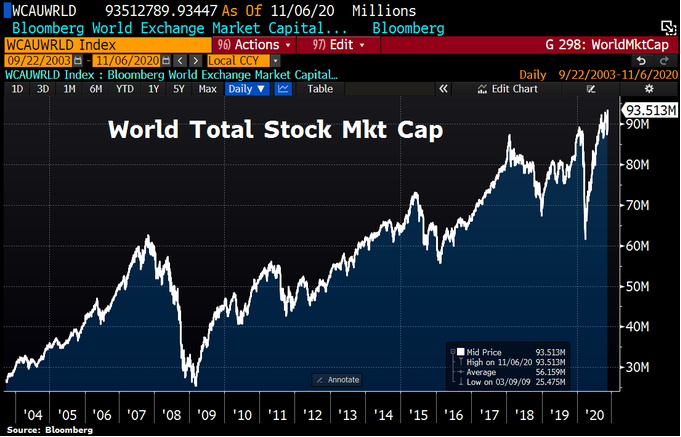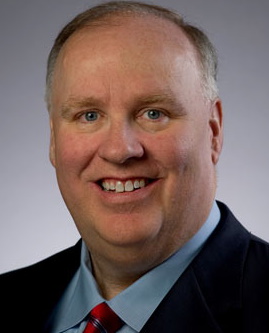Searching for the next Swensen
by charles | Comments are closed06/14/2021
Talent is a flame. Genius is a fire. — Bernard Williams
There is no place like America for exceptional investment talent.
Our country continues to produce and attract the world’s best and brightest and, along with Canada and Mexico, owns 58% of the world’s financial assets ($136 trillion) and collected 64% of all asset management revenues ($150 billion) in 2020. See: Boston Consulting Group Global Wealth 2021.
But with all our talent and resources, the challenge of building superior investment teams that can endure and outperform over a decade or more is daunting and seldom achieved.
Yale, Princeton, MIT, and Bowdoin have had a great run. Goldman Sachs and JPMorganChase have outlasted most of their peers.
And yet, while consistent, multi-decade superiority isn’t impossible, it’s exceedingly rare. Many redoubtable firms have just vanished.
There are a very few, semi-mythical beasts like the recently deceased Mr. David F. Swensen, Ph.D., Yale’s long-serving chief investment officer and Warren Buffett, of course.
Swensen built a process for identifying superior outside managers, cementing relationships, and staying with them as long as they were judged to have the edge. He was also an innovator with first-mover advantage in many respects which can’t be replicated.
One of my professors at The University of Chicago once remarked that some money managers seem to have the touch. And we can theorize, not always correctly, about how they do it. But most of them have a run bracketed by a certain period or a set of conditions, and then they are gone.
Even James Simons of Renaissance Technologies – the best trader ever – just had a losing year.
Why is this?
Paul Wachter, former investment chair of the University of California Regents, outlined the criteria used by the UC regents during their search in 2014 for a chief investment officer.
Mr. Wachter listed three principal qualities the UC board looked for in a candidate.
Organizational skills: Someone with serious organizational skills, who could work effectively with a big institution like the UC system.
Personality: Someone with the personality to work constructively with all of those different constituents, from the board and president to student groups.
Investment skill: But he added a caveat to number three.
Mr. Wachter said, “what you can’t tell in an interview is how good of an investor someone is. If you look at their track record in their previous position, you’re seeing the product of an entire team or institution.”
As readers of The Skorina Letter have no doubt noticed, we spend a great deal of time mining and analyzing the investment performance and pay of asset managers and chief investment officers. We look for skill and persistence and the data to support our search recommendations.
But, as Mr. Wachter points out, identifying a superior investment leader is not that simple.
Why?
Read More »A Block-buster Year for Pensions and Nonprofits
by charles | Comments are closed06/07/2021
Public pensions, endowments, and foundations will announce blow-out performance when returns are released this fall.
Thanks to bold moves and celestial markets the fiscal year ending June 30, 2021 will be a block-buster for the ages.
A little over a year ago, around March 2020 when markets fell off a cliff, veteran chief investment officers scrambled to rebalance and put their extra cash to work, a gutsy call but not without precedent.
Modern portfolio theory – and the 2009 crash – taught CIOs that when markets crater, investors big and small should rebalance (i.e., buy everything in sight).
Experience, history, and luck were on their side. As of April 30, 2021, the S&P 500 has had a one-year total return of 45.98% and the Barclays Agg ETF returned a minus 0.27%, so a plain vanilla 70/30 portfolio scored about 32.1%.
As a result, equity-heavy, risk-on pensions will have their best returns in years. We could see thirty percent and more.
Endowment and foundation CIOs should do almost as well thanks to eye-popping, co-invested venture and private equity returns and good old-fashion leverage. E&Fs may hold less equity and more alts, but many private market pay-offs were extraordinary.
On the other hand, for those CIOs and investment committees who missed the 2009 memo and panicked — slashing equity exposure then belatedly rebalancing at much higher prices — things aren’t looking so good!
Sub-par returns don’t sit well with trustees and donors. There will be consequence.
CIO Turnover: Pink Slips and Greener Pastures
Poor performance is not the only reason for a rash of CIO departures over the coming year. Early retirement is in the air.
Many investment heads have grown accustomed to the no-commute, work-from-anywhere lifestyle during covid and they don’t look forward to rejoining what they left behind.
They saved their money, invested wisely, and now have a healthy retirement cushion. Many have told us privately that they plan to retire early.
Registered Investment Advisors hear the same thing. Over the past year we’ve spoken with over two-hundred RIAs and they say that among clients in their fifties, early retirement is the number one question on their minds. “I don’t want the commute, stress, and hassles any more. Do I have enough to retire now?
For those of us in the search business, it’s going to be a very busy year.
When the Music Stopped
Read More »David F. Swensen, End of an Era
by charles | Comments are closed05/10/2021
Endowment Returns Update: More to the Story
David F. Swensen, End of an Era
— Lux Et Veritas
David F. Swensen, Ph.D., Yale ’80 and chief investment officer Yale endowment, died May 5th, 2021.
Mr. Swensen was a 32-year-old kid in 1985 with no endowment experience and a couple of years on Wall Street when William Brainard ’62 Ph.D. and Yale provost hired him as the university’s first endowment investment manager.
When Swensen accepted the position at Yale, most endowments held US stocks and bonds. That’s it!
His iconoclastic views on markets and investment opportunities led to a fundamental shift in how and where institutional investors sought to make money.
The conceptual groundwork had been laid for Mr. Swensen’s investment heresy in 1967 by another Yale alum, McGeorge Bundy A.B. ‘40, then-president of the Ford Foundation.
In the Foundation’s ‘67 annual report, President Bundy noted that “…the true test of performance in the handling of money is the record of achievement, not the opinion of the respectable.”
Mr. Bundy commissioned influential studies attacking the old assumption that the “prudent man” rule of personal trust law applied to management of endowment and foundation funds.
Along with the dissemination of modern portfolio theory, these initiatives cleared the path for Swensen’s sophisticated and non-traditional portfolio management style at Yale and, in the years that followed, other Ivy schools.
Today, thanks to Mr. Swensen’s “Pioneering Portfolio Management“, endowment investment chiefs are the ultimate long-term, strategic investors.
They have an infinite investment horizon, a global playing field, and can invest in anything anywhere – within the broad policy limits set by their institution.
He will be missed and hard to replace.
Swensen’s investment portfolio and returns are baked in for at least five more years. But good management starts with good succession planning.
As I mentioned to Bloomberg News, culture and institutional memory play an important role in top quartile investing. And in the case of Yale, we should add “tradition.”
Our first headhunting calls would be to two of the top CIOs on our list; 47 years old MIT CIO Seth Alexander ‘95, and Stanford University’s CIO Rob Wallace ‘02, 55 years old.
Both have years remaining in their careers, stellar track records, and strong ties to the school and the Yale investment office (YIO).
If not Messrs. Alexander or Wallace, well there’s plenty of Yale alumni and YIO talent to pick from.
See the YaleNews’ touching “In Memoriam”, next article.
—————
Updates and Erratum
We have updated our charts to include ten more schools and highlight more women CIOs among the top performers.
Also, the University of Virginia earned ten and five-year returns of 10.1% and 6.6% (not 8.10% and 5.80% as we first reported) for June 30, 2020.
See: Endowment Returns 2020, Strange Days for updated charts and rankings.
— Charles Skorina
Read More »Endowment Performance Rankings 2020 – Strange Days
by charles | Comments are closed05/01/2021
Our 2020 endowment performance report features ten-year returns for one hundred and ten institutions — the latest available. We consider a ten-year span to be a rigorous and revealing measure of the strength of an institution’s oversight and long-term investment abilities.
However, as always, there are caveats.
Timing
Most endowments close their books for the fiscal year on June 30 then prepare for the auditors. Soon thereafter, usually in mid to late fall, the schools release preliminary performance results.
These numbers are “official” but Non-Time Matched because private market performance reporting – real estate, private equity, etc. – lags public market results by three to six months, and sometimes longer.
Usually, this does not matter because public and private market investments tend to move pretty much in sync.
However, in spring 2020 with covid on the loose, the June 30th fiscal close missed a big uptick in private market valuations because those numbers were not ready and therefore not reported to the investment offices. This hit big endowments hard, those with heavy allocations to alternatives.
Costs
Not all returns are equal.
Some schools report their numbers net of all costs including external management fees, internal office costs, and the endowment tax.
However, many endowments when computing their returns subtract external management fees but not office costs or the endowment tax.
Over a ten-year period that makes a difference.
Turnover
Turnover affects performance. Only about a third of the one hundred CIOs on our list have held the top investment position for ten years or more and they tend to have the best performance
For example, in our chart below, ten of our top fifteen endowments by 10-year performance had investment heads with ten years or more in tenure.
Read More »Scott Malpass and Notre Dame: Keeping the faith for 32 years
by charles | Comments are closed03/31/2021
The most notable CIO-centric event of 2020 in the endowment world was undoubtedly the retirement of Scott Malpass as chief investment officer at Notre Dame.
Mr. Malpass was just a dewy 25 years old and relatively inexperienced when Notre Dame recruited him as “assistant investment officer” in 1988.
He was already effectively in charge that year, but decorously waited for his predecessor to retire in 1989 to officially take the CIO title.
In 2020 he punched out as smoothly as he had punched in.
His successor, Michael Donovan, had been Mr. Malpass’ wingman for 20 years. They had been undergraduate classmates (and roommates) in ND’s class of 1984, making them both about 58 in 2020.
Although he is ferociously devoted to his school, Mr. Malpass chose not to hang on until standard retirement age. Instead he passed the baton early enough to leave plenty of career runway for his colleague and successor.
Badly executed successions can be ruinous in institutional investing. The examples have been too notorious to list. This is how the pros do it.
Mr. Malpass had 32 years in harness when he stepped down last year and was the longest-serving endowment CIO we know of, with the prominent exception of Yale’s David Swensen, 35 years and counting.
Longevity is great (at least for the incumbent) but it’s performance that counts. And, although the Yale endowment is far more prominent, Notre Dame’s performance has been remarkably good, and only very slightly behind the top northeastern schools. Casual observers may have missed that.
Mr. Swensen has earned his fame. But we suspect that the attention paid to Yale and the relative inattention to Notre Dame has much to do with the regional chauvinism of the financial press.
For the media, a Catholic college in Indiana will never have quite the cachet of the Ivy League.
Take a look at our 5-year performance numbers below. Allowing for ties, the 5-year return ranking is:
No. 1: Brown (9.8)
No. 2: MIT (9.0)
No. 3: Rockefeller/ Bowdoin (tie) (8.5)
No. 4: Yale/ Dartmouth/ UTIMCO (tie) (7.8)
No. 5: Notre Dame/ Princeton/ Williams (tie) (7.7)
By this reckoning, the recent performance of the Notre Dame Model is just a whisker behind the Yale Model. In fact, Notre Dame beat Yale in 3 of the last 4 years.
This is so interesting that we thought we should reach back to our longer-term Yale versus Notre Dame dataset.
Twenty years is a nice, round number, and we can’t think of any other such pairing that could put the same two long-serving CIOs head to head. But we pushed back 21 years to capture the Dotcom Meltdown beginning in the second half of that fiscal year.
Notre Dame versus Yale endowment performance
FY 2000-2020
Read More »




